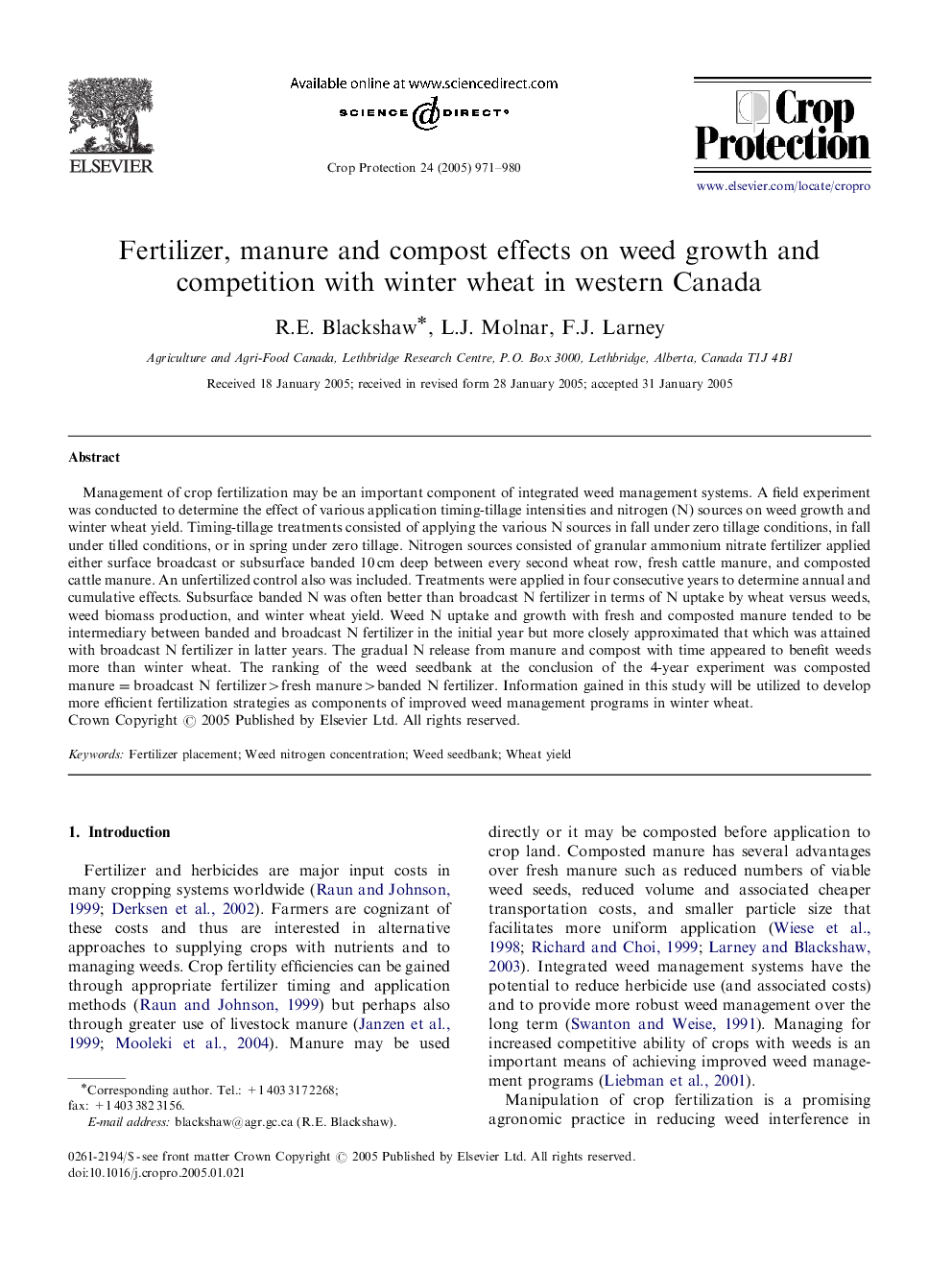| Article ID | Journal | Published Year | Pages | File Type |
|---|---|---|---|---|
| 9473014 | Crop Protection | 2005 | 10 Pages |
Abstract
Management of crop fertilization may be an important component of integrated weed management systems. A field experiment was conducted to determine the effect of various application timing-tillage intensities and nitrogen (N) sources on weed growth and winter wheat yield. Timing-tillage treatments consisted of applying the various N sources in fall under zero tillage conditions, in fall under tilled conditions, or in spring under zero tillage. Nitrogen sources consisted of granular ammonium nitrate fertilizer applied either surface broadcast or subsurface banded 10Â cm deep between every second wheat row, fresh cattle manure, and composted cattle manure. An unfertilized control also was included. Treatments were applied in four consecutive years to determine annual and cumulative effects. Subsurface banded N was often better than broadcast N fertilizer in terms of N uptake by wheat versus weeds, weed biomass production, and winter wheat yield. Weed N uptake and growth with fresh and composted manure tended to be intermediary between banded and broadcast N fertilizer in the initial year but more closely approximated that which was attained with broadcast N fertilizer in latter years. The gradual N release from manure and compost with time appeared to benefit weeds more than winter wheat. The ranking of the weed seedbank at the conclusion of the 4-year experiment was composted manure=broadcast N fertilizer>fresh manure>banded N fertilizer. Information gained in this study will be utilized to develop more efficient fertilization strategies as components of improved weed management programs in winter wheat.
Related Topics
Life Sciences
Agricultural and Biological Sciences
Agronomy and Crop Science
Authors
R.E. Blackshaw, L.J. Molnar, F.J. Larney,
